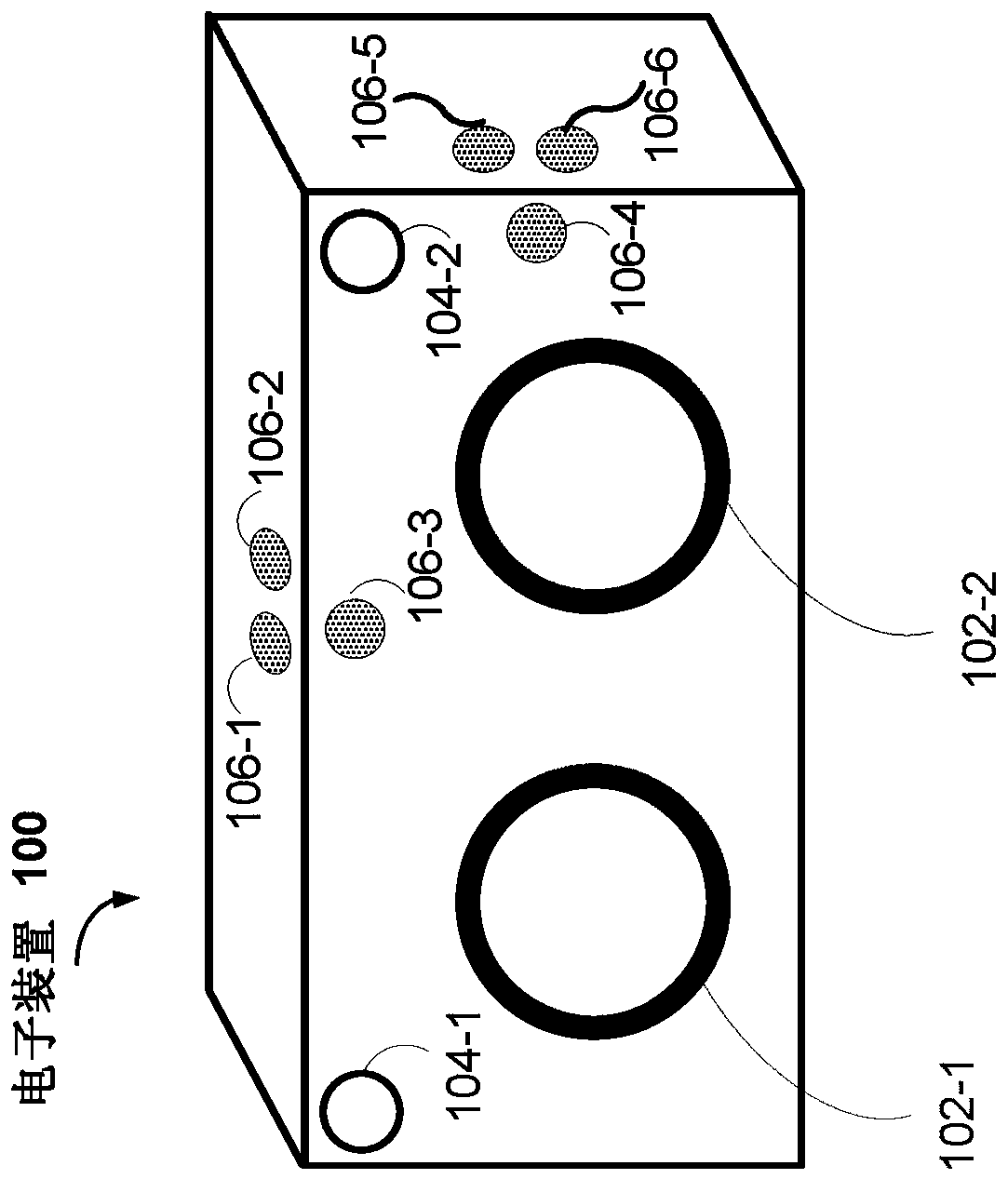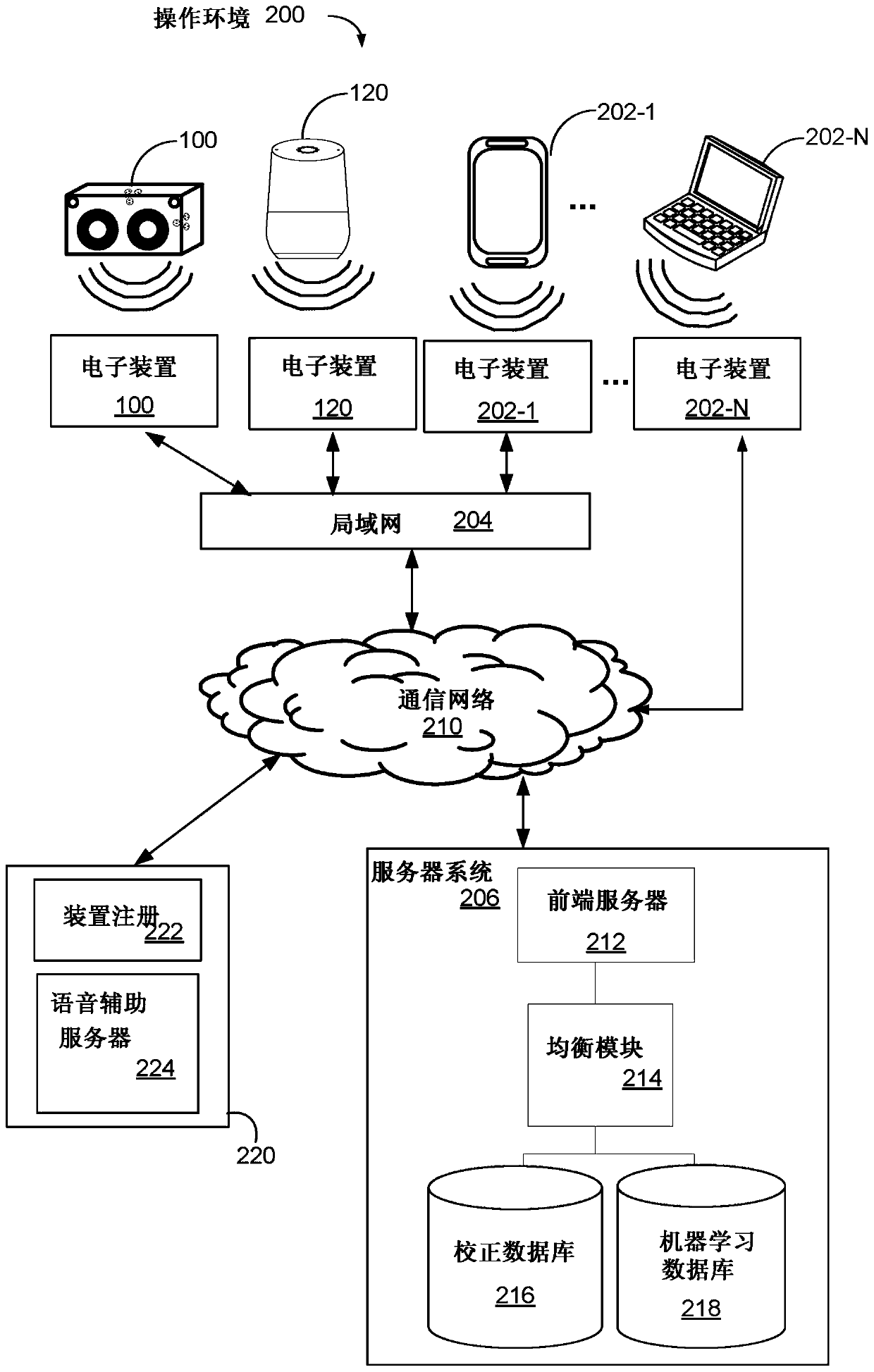Methods and systems for automatically equalizing audio output based on room characteristics
A technology for equalizing audio and room, applied in the direction of automatic tone/bandwidth control, stereo system, input/output process of data processing, etc., which can solve time-consuming and cumbersome problems, and avoid the need of setting or calibration process or remote sensor Effect
- Summary
- Abstract
- Description
- Claims
- Application Information
AI Technical Summary
Problems solved by technology
Method used
Image
Examples
Embodiment Construction
[0049] Reference will now be made in detail to the embodiments, examples of which are illustrated in the accompanying drawings. In the following detailed description, numerous specific details are given in order to provide a thorough understanding of various described embodiments. It will be apparent, however, to one skilled in the art that various described embodiments may be practiced without these specific details. In other instances, well-known methods, procedures, components, circuits, and networks have not been described in detail so as not to unnecessarily obscure aspects of the embodiments.
[0050] An electronic device integrating a microphone and a speaker is configured to receive and output sound. The sound output by these devices may actually be affected by their placement in the listening room. For example, depending on the number of nearby reflective surfaces in the listening room (eg, nearby furniture, walls, or ceilings), bass frequencies of sounds output by ...
PUM
 Login to View More
Login to View More Abstract
Description
Claims
Application Information
 Login to View More
Login to View More - R&D
- Intellectual Property
- Life Sciences
- Materials
- Tech Scout
- Unparalleled Data Quality
- Higher Quality Content
- 60% Fewer Hallucinations
Browse by: Latest US Patents, China's latest patents, Technical Efficacy Thesaurus, Application Domain, Technology Topic, Popular Technical Reports.
© 2025 PatSnap. All rights reserved.Legal|Privacy policy|Modern Slavery Act Transparency Statement|Sitemap|About US| Contact US: help@patsnap.com



